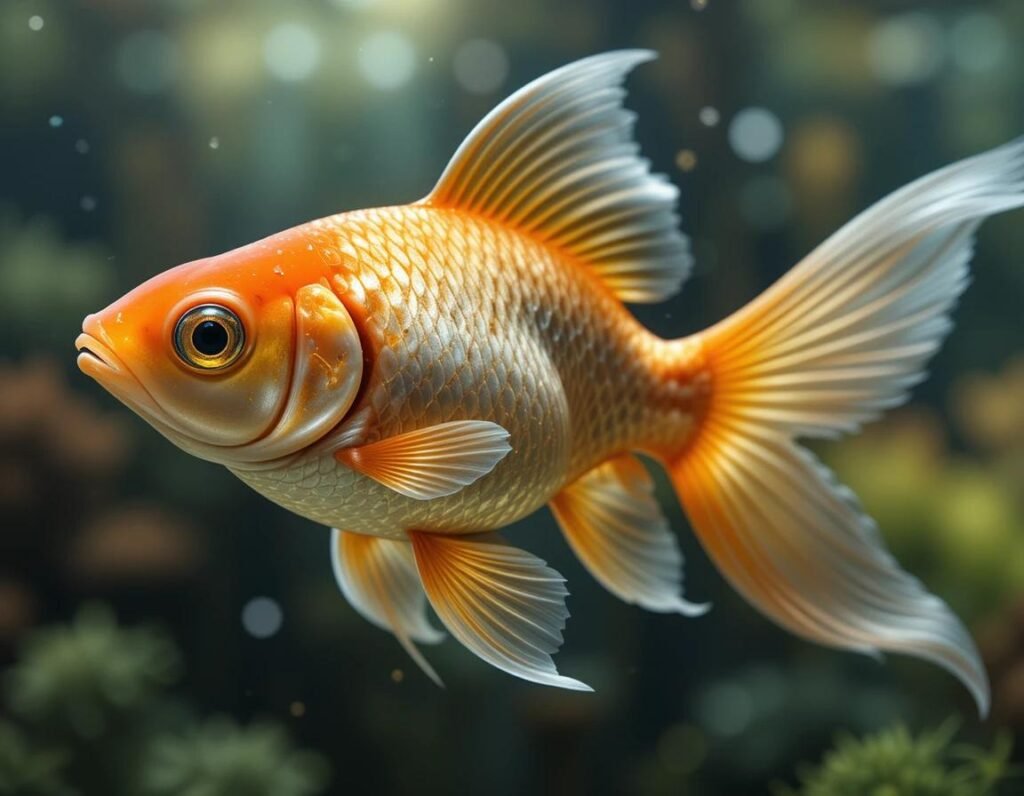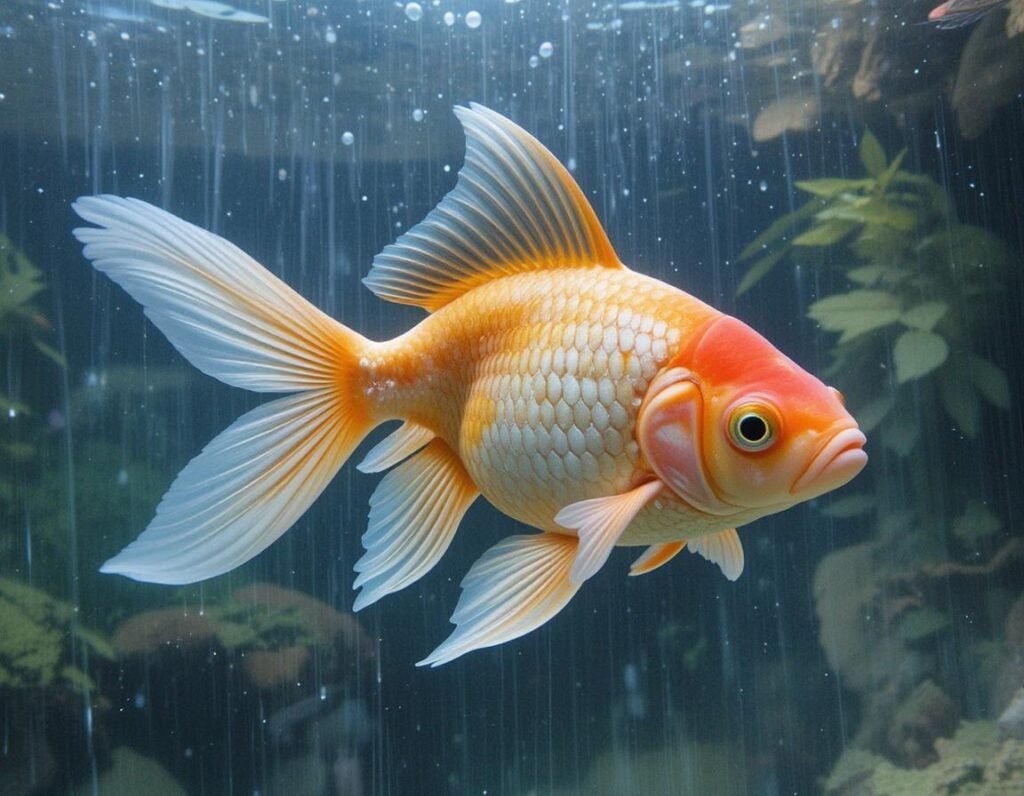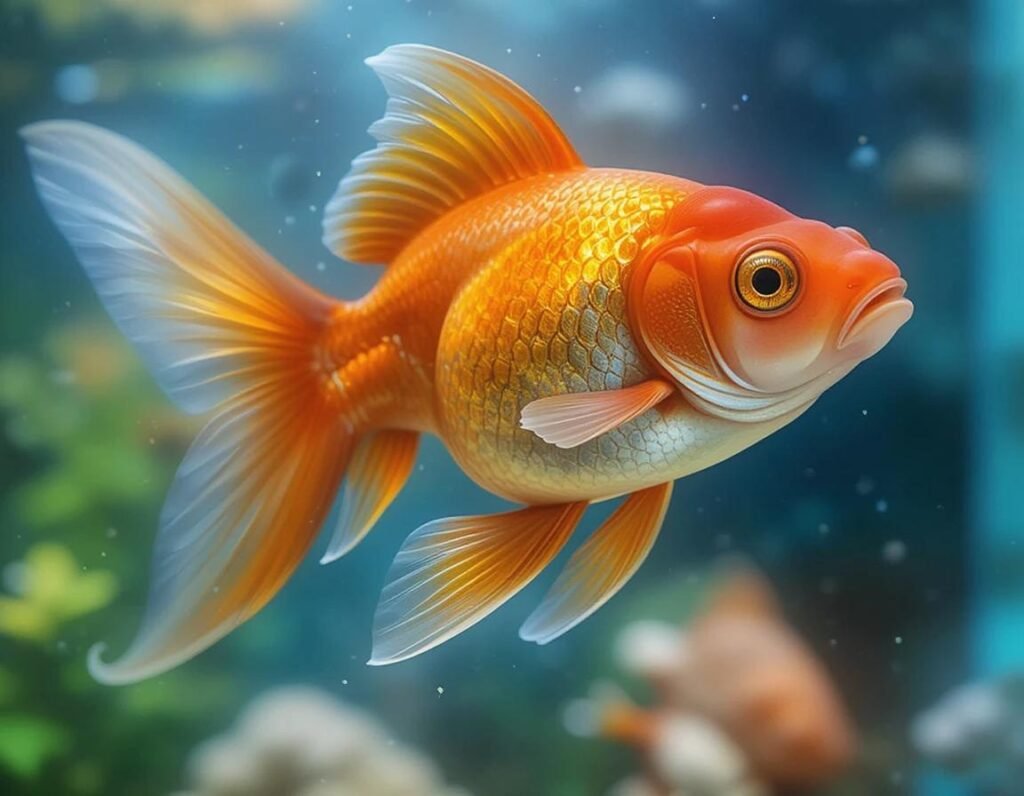
Fancy Goldfish Care: Keeping Your Finned Friends Fancy and Fabulous
So, you’ve got yourself a fancy goldfish, huh? Congrats! You’re now the proud owner of one of the most graceful, elegant, and—let’s face it—fabulous fish in the world. But before you start making your goldfish a crown (which they’d probably love, by the way), it’s important to know how to care for your fancy goldfish properly. These little swimmers aren’t your typical run-of-the-mill goldfish, and they require some special attention to keep them looking fabulous and swimming happily.
In this guide, we’ll break down everything you need to know about fancy goldfish care, from their tank setup to feeding and everything in between. By the end of this, your fancy fish will be the happiest (and most photogenic) little creature in the tank!
What Makes Fancy Goldfish Special?
Before we dive into the care tips, let’s talk about what makes these little fish so special. Fancy goldfish are different from regular goldfish in a few key ways:
- Unique body shapes: Fancy goldfish have more compact bodies, with shorter, rounder forms. They often have distinctive features like long fins, calico colors, and artistic patterns.
- Delicate fins and tails: Their beautiful, flowing fins can get a bit delicate, so they need a tank that lets them swim freely without their fins getting caught on anything sharp.
- Slower swimmers: Fancy goldfish tend to be a little slower than their sleek cousins. They are more “elegant floaters” than “speed demons,” so they don’t compete as well with faster fish.
With that in mind, let’s go over the basics of fancy goldfish care.
1. Tank Size: More Space for Your Fancy Fish
First things first: size matters—and we’re not just talking about their fins. Fancy goldfish need plenty of space to swim around, especially since they tend to be slower swimmers and need a tank large enough to avoid feeling cramped.
- Recommended Tank Size: For one fancy goldfish, you should aim for at least 20 gallons of water. If you’re adding more goldfish to the mix, you’ll need an extra 10 gallons for each additional fish.
- Space to Swim: Even though fancy goldfish aren’t speedsters, they do enjoy swimming, so make sure there’s plenty of open space in the tank.
Fancy goldfish are social creatures, so giving them space is like giving them their own little kingdom to rule—they’ll love you for it!
2. Filtration and Water Quality: Keep It Clean!
Goldfish are filtration-loving creatures—they like their water clean and fresh. Fancy goldfish are particularly sensitive to poor water quality, which can lead to health problems. Here’s how you can keep your tank water top-notch:
- Strong Filtration: Invest in a good filtration system that can handle the bioload of your goldfish. Fancy goldfish are messy eaters and produce a lot of waste, so you need a filter that can keep the water clear and the toxins in check.
- Regular Water Changes: Aim to change 10-20% of the water every week. Goldfish produce waste like it’s their job, so regular water changes will help keep them happy.
- Water Temperature: Fancy goldfish are cold-water fish, so they prefer temperatures between 65°F and 75°F (18°C-24°C). Keep the water on the cooler side to prevent stress.
3. Feeding: The Fancy Feast
One of the joys of owning fancy goldfish is feeding them! They’ll happily gobble up their meals, and because they’re so easy to feed, it’s tempting to overdo it. But be careful! Overfeeding can lead to bloating, swim bladder issues, or even a messy tank.
Here’s what you need to know about feeding your fancy goldfish:
- Quality Food: Fancy goldfish have a slightly slower metabolism, so they benefit from high-quality fish flakes or pellets designed for goldfish. You can also give them occasional treats like blanched vegetables (peas are a goldfish favorite!).
- Feeding Schedule: Feed your goldfish small amounts twice a day. Make sure they eat everything in about 2-3 minutes and remove any uneaten food to avoid water pollution.
- Variety is Key: Goldfish love variety! You can rotate between flakes, pellets, and the occasional treat, but avoid feeding them too much at once.
4. Decorations and Tank Setup: Let the Fancy Fish Flourish
Fancy goldfish aren’t just swimming balls of color—they love a bit of style in their tank. But don’t go overboard. Here’s how to set up a fancy goldfish-friendly environment:
- Substrate: Gravel or smooth pebbles are ideal for fancy goldfish. Avoid sharp decorations, as goldfish can get their delicate fins caught.
- Plants: Fancy goldfish love nibbling on live plants, but some plants can’t handle the love. Opt for hardy plants like anubias or Java fern.
- Space to Swim: Make sure there’s enough open space in the tank for them to swim freely. Fancy goldfish aren’t fast, so they need the space to move around comfortably.
Think of your tank as a fancy restaurant—make sure the atmosphere is just right!
5. Health and Common Issues: Keep Your Goldfish Glamorous
Even the fanciest goldfish can face health problems if not cared for properly. Here are some common health issues to watch out for:
- Swim Bladder Disease: Fancy goldfish are prone to swim bladder issues due to their round bodies. Overfeeding or too many treats can cause this. If your fish is struggling to swim or staying at the bottom of the tank, this could be the cause.
- Fin Rot: Make sure your goldfish’s fins are in good condition. Fin rot can be a sign of poor water quality or injury.
- Ich (White Spot Disease): This is a common parasite that shows up as small white spots on your fish’s body. Keep an eye on your goldfish and treat the tank with medication if needed.
A healthy fancy goldfish is a happy goldfish, so keep an eye on their behavior and health to catch any issues early.

6. Breeding Fancy Goldfish: It's Not Just for the Pros!
So, you’ve gotten the hang of caring for your fancy goldfish, but now you might be wondering—can you breed them? The good news is that fancy goldfish breeding isn’t reserved for experts. With the right conditions, your goldfish might just surprise you with a little school of baby goldfish!
Here’s how to make it happen:
- Separate Males and Females: First, you’ll need to have both male and female goldfish. In the breeding season (usually spring), the males will chase the females and nudge them to release their eggs.
- Spawning Setup: To encourage breeding, you should add plants and spawning mops to the tank. These provide hiding spots for the eggs and keep the fry safe from being eaten by the adult fish (because let’s face it—goldfish aren’t always the best parents).
- Water Temperature: Slightly warmer water (about 75°F) can trigger breeding behavior. Make sure the water is clean and well-filtered during this process.
Don’t be surprised if your goldfish get a little frisky. But be ready, because baby goldfish (also called fry) can add some extra responsibility to your goldfish care routine.
7. Common Fancy Goldfish Myths: Busting the Truth
Let’s clear up some common myths about fancy goldfish care, because we all know the internet loves to spread a good rumor. So, let’s set the record straight!
Myth #1: Fancy Goldfish Only Live a Year or Two
- False! With the right care, fancy goldfish can live anywhere from 10 to 15 years (sometimes even longer!). They’re not short-lived swimmers, so don’t be fooled by the stereotype.
Myth #2: Fancy Goldfish Are High-Maintenance
- While they do need attention, fancy goldfish aren’t as difficult to care for as some other fish species. With proper tank setup, clean water, and healthy food, they’re just as easy to care for as your average goldfish.
Myth #3: Fancy Goldfish Can Live in Small Bowls
- Huge no-no! Fancy goldfish need space to swim and thrive in larger tanks. A small bowl can stress them out and limit their growth, leading to a shorter life.
8. Fun Facts About Fancy Goldfish: Because They Deserve the Spotlight
Now that we’ve covered all the essential care tips, let’s sprinkle in some fun facts about fancy goldfish to keep things light and entertaining:
- Fancy Goldfish Can Recognize Their Owners: Yup, fancy goldfish are smarter than you think! They can learn to recognize their owners and will even swim up to greet you when you approach the tank.
- Goldfish Don’t Forget: Contrary to popular belief, goldfish actually have a memory span of several months. They can remember things like feeding times and other tank mates.
- Goldfish Can See Color: Goldfish have excellent color vision, which helps them spot food and interact with their environment. They can even see ultraviolet light!
- They’re Clean Freaks: Fancy goldfish love to keep their space tidy. They enjoy swimming through plants and rocks, organizing their little world in the process.
So, the next time you look at your fancy goldfish, just remember—you’re caring for a creature that’s smart, colorful, and full of personality. And with the right care, they’ll reward you with years of beauty and charm.
Conclusion: Fancy Goldfish, Fancy Care
Caring for fancy goldfish may seem like a lot of work, but once you get the hang of it, you’ll be rewarded with a stunning fish that’s full of life and character. Whether you’re just starting out or you’re a seasoned pro, providing them with the right environment, food, and attention is the key to keeping your fancy goldfish happy, healthy, and fancy for years to come.
So, throw on your goldfish crown (if you have one—don’t worry, we won’t judge), give your fish the best care, and enjoy the beauty they bring to your aquarium. Because when it comes to fancy goldfish, it’s all about the good life—they’ve earned it!
FAQs About Fancy Goldfish Care
1. How long do fancy goldfish live?
Answer: Fancy goldfish can live for 10 to 15 years, or even longer if they’re well cared for! With proper tank conditions, healthy food, and clean water, your goldfish will thrive and keep swimming gracefully for many years. So, don’t expect them to just be a “temporary” part of your aquarium family!
2. What’s the best tank size for fancy goldfish?
Answer: For a single fancy goldfish, you should provide at least 20 gallons of water. If you add more goldfish, plan for an additional 10 gallons per fish. Fancy goldfish need plenty of space to swim and grow, so don’t squeeze them into a small tank—they prefer room to flaunt their flowing fins!
3. Do fancy goldfish need a filter?
Answer: Yes! Fancy goldfish are messy eaters and produce a lot of waste, so a good filtration system is a must. The filter will help keep the water clean, remove toxins, and maintain overall water quality. Aim for a filter rated for a tank larger than your current tank size, as goldfish tend to be a little extra with the waste.
4. How often should I change the water in a fancy goldfish tank?
Answer: To keep your goldfish healthy, change 10-20% of the water in the tank every week. Goldfish are notorious for dirtying their water, and regular water changes will help keep everything fresh and clear. Don’t forget to use a water conditioner to remove chlorine if you’re using tap water.

5. What do fancy goldfish eat?
Answer: Fancy goldfish love a variety of foods, including high-quality flakes, pellets, and fresh veggies like peas, spinach, and lettuce. Occasional treats (like bloodworms) are fine too, but be careful not to overfeed them! They have a slower metabolism, so they only need to eat small amounts twice a day.
6. Can fancy goldfish live with other fish?
Answer: Fancy goldfish are generally peaceful and get along with other cold-water fish like white cloud minnows and zebra danios. However, be careful not to mix them with aggressive species or those that prefer warmer water, like betta fish. Stick to cold-water companions to keep your goldfish calm and happy.
7. How do I know if my fancy goldfish is sick?
Answer: Some common signs of illness in fancy goldfish include:
- Clamped fins (they hold their fins close to their body)
- Loss of appetite
- Lethargy or staying at the bottom of the tank
- Swim bladder problems (floating upside down or struggling to swim)
- White spots or unusual markings If you notice these symptoms, it’s time to check the water quality, isolate the sick fish if needed, and consult a vet specializing in fish.
8. Do fancy goldfish need plants in their tank?
Answer: While fancy goldfish aren’t known for their plant-growing abilities (they’ll nibble on them!), live plants can still help maintain water quality. Some hardy plants like Java fern, anubias, or hornwort can survive despite goldfish munching on them. Plants also provide hiding spots and help oxygenate the water.
9. Can fancy goldfish live in small bowls or tanks?
Answer: No! Fancy goldfish are not suited for small bowls or tanks. They need plenty of space to swim and grow, so you’ll need a larger tank (at least 20 gallons for one fish). A small bowl will stress your fish out and could lead to health problems.
10. How can I prevent my fancy goldfish from getting swim bladder disease?
Answer: To avoid swim bladder disease, feed your goldfish small amounts of food, and make sure they don’t overeat. It’s especially important to avoid feeding them dry foods exclusively, as this can cause digestion issues. Offering blanched peas once in a while can help relieve constipation, which can lead to swim bladder problems.
11. How can I tell if my fancy goldfish is happy?
Answer: A happy fancy goldfish will:
- Swim actively and explore the tank
- Have bright, clear eyes and healthy fins
- Greet you when you approach the tank (they recognize their owners!)
- Be calm and peaceful with tank mates
If your goldfish is darting around frantically or hiding constantly, there could be an issue with the water quality or tank setup.
12. Can fancy goldfish be trained?
Answer: Fancy goldfish are surprisingly intelligent and can be trained to do simple tricks! Some owners train their goldfish to follow their fingers, jump through hoops, or even eat from their hands. Training takes patience, but it’s a fun way to bond with your finned friend.


